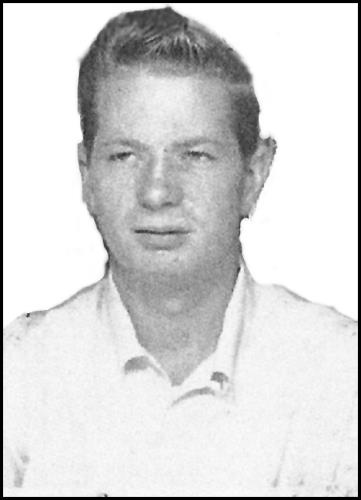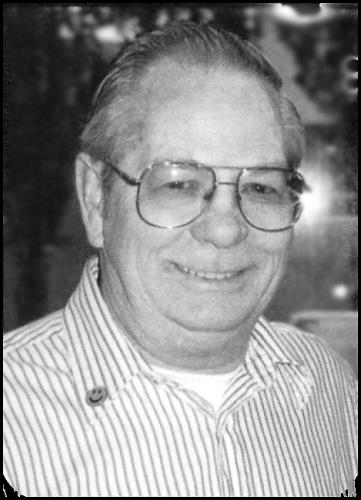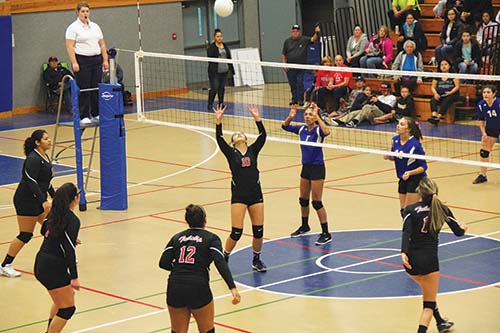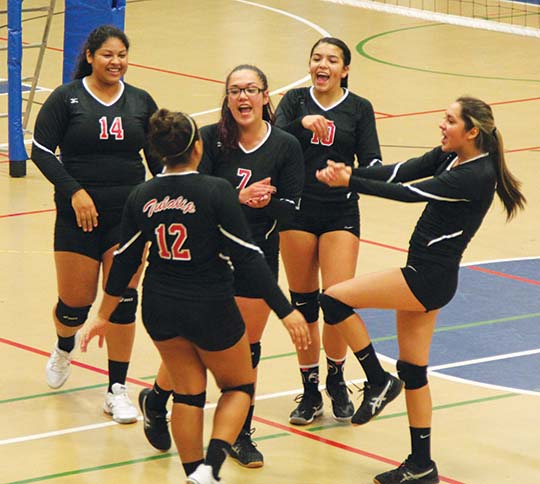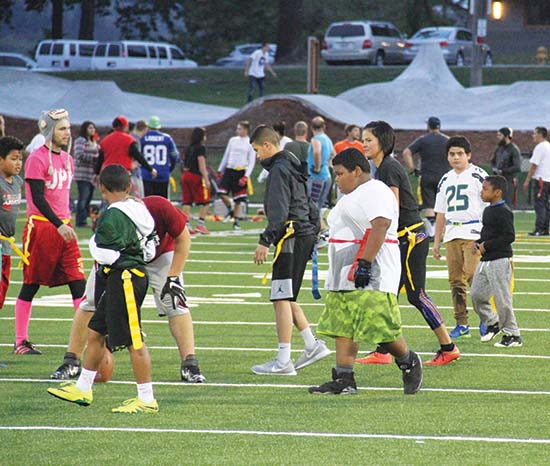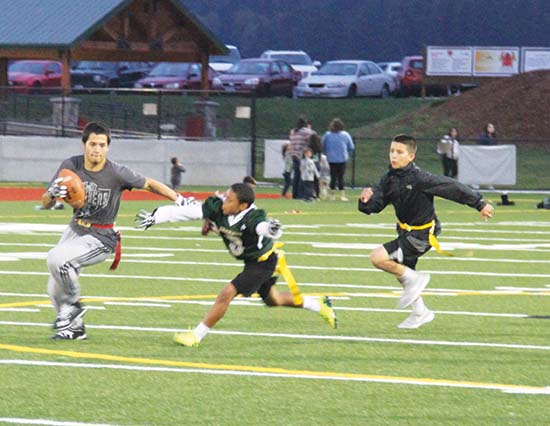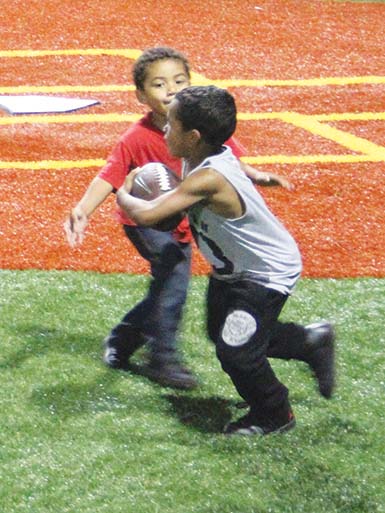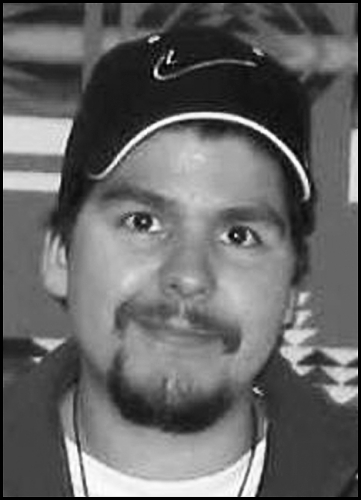Month: October 2016
Rodney “Glenn” Simpson Sr. (1937 – 2016)
Rodney “Glenn” Simpson Sr. was born on April 4, 1937, in Wallins Creek, Kentucky to Ada Thomas and Aubrey Simpson. Glenn joined his parents; grandparents; daughter, Sharon Kae; grand-daughters, Bridgette Simpson Martin and Lorena Comenote; his buddy, Cecil Lacy Sr. and many other relatives and friends, being surrounded by his family, on October 13, 2016. Glenn worked as an electrician; machinist, and a pit boss at the Tulalip Casino. He also worked in the Tulalip marketing department and finished his casino career in the surveillance department. He proudly served in the US Navy from 1954 – 1958, where he met his wife, Dawn and his brother, Lacy. He is survived by his wife of 60 years, Dawn; sister, Phyllis Lowe and her family of Port St. Lucie, Florida; children, Deb (Howard) Brown, Rod Simpson Jr; Renee (Todd) Olsen; Danny and Christy Simpson; April (Rocky) Brisbois; and Sjeabon Simpson and Jody Dover; 34 grandchildren; 27 great-grandchildren and two great-great-granddaughters. Funeral Services will be held Monday, October 17, 2016, at 10:00 a.m. at the Tulalip Gym.
Family Services Halloween Family Fun Night, October 25
October 19, 2016 syəcəb
Please use the following link to download the October 19, 2016 issue of the syəcəb:
https://www.dropbox.com/s/hu9m10ca6tepm83/October%2019%202016%20sy%C9%99c%C9%99b.pdf?dl=0
Women’s Health Fair, October 21
Lady Hawks soar back vs. Eagles, stumble vs. Tomahawks
By Micheal Rios, Tulalip News
After losing their first matches of the season, the Tulalip Heritage Lady Hawks (5-2) looked to bounce back and right the ship when they traveled to Grace Academy to play the Lions (3-3) on Friday, October 7. This was the second matchup between the teams, as they previously played back on September 8 in a thrilling match the Lady Hawks won 3 games to 2.
In the 1st game, the Lady Hawks came out flat and Grace took advantage by going up 17-10, forcing coach Tina Brown to call timeout. Following the timeout, Lady Hawk players were much more active and got engaged defensively. They were flying around and diving to save rallies. Clutch serving by Aliya Jones and Cidney Marteney proved to be the difference, as they helped their team go on a 15-4 run and take the opening game 25-21.
Both the 2nd and 3rd games played out the same with both teams playing well at the net and forcing each other into unforced errors. The Lady Hawks weren’t able to go on those long rallies to string together points, which allowed Grace to close-out both games. Grace took the 2nd game 25-22 and the 3rd game 25-19.
Down 1 game to 2 and needing to grind out back-to-back games is an all too familiar place for the Lady Hawks lately. They were not able to do it in their last two losses. However, unlike in the previous two games, the Heritage fans were in full force and were determined to give that “7th man” energy to their team. It was such a great experience to witness the Heritage fans pick up their team and motivate the girls to dig deep.
Seemed like after every point the Lady Hawks scored in the 4th game was met with cheers and applause from their fans. After winning the 4th game and forcing a match deciding 5th game, the fans really let loose. Sounded more like a home game then an away game for sure.
In the 5th and final game, the momentum from the last game coupled with the energy from their fans proved to be huge for the Lady Hawks. After being down 1 game to 2, they soared back and won back-to-back games to claim match victory 3 games to 2.
On Monday, October 10 the Lady Hawks (6-2) hosted the Marysville Pilchuck C-team (4-3) at Francy J. Sheldon gymnasium. On paper this looked to be a very lopsided mismatch, with all the advantages in favor of the home team. There were expectations going in that the Lady Hawk starters would take care of business early, so that the younger bench players could see heavy minutes and get more game time experience. Unfortunately, that expectation would not be met.
Games 1 and 2 played out in near identical fashion. In each game the Lady Hawks took an early 5-2 lead, only to squander it and be tied 13-13 minutes later. Instead of going on rallies and putting the pressure on the less experienced Tomahawks, the girls played without energy and kept committing unforced errors. The Lady Hawks lack of team work and hustle cost them both games by the score of 23-25.
Before the start of game 3, coach Tina Brown urged her girls to get into game mode and to work through their mistakes as a team. Her team responded in an emphatic way. The Lady Hawks came out with a sense of urgency and were firing on all cylinders to take a commanding 16-8 lead. They continued their solid play and closed out the 3rd game, 25-12.
For whatever reason the Lady Hawks lost that sense of urgency and again played sluggishly. They found themselves trailing 5-15 in the 4th game and waited too late to mount a comeback. They lost the game 20-25 and the match 1 game to 3, sending their overall record to (6-3).
Friday Night Lights Brings Communities Together
By Kalvin Valdillez, Tulalip News
The Tulalip Tribes and Marysville School District kicked off Tulalip/Marysville Unity Month (#TMUnityMonth) on October 7, 2016, with Friday Night Lights. The event, hosted by Youth Services, is a flag football tournament that sees over 60 participants on the field every Friday.
An all-ages event, Friday Night Lights participants get to play live, fast-paced football, while bonding with family and community members of Tulalip, Marysville, Everett, and Arlington. The event consists of four teams that will play each other every Friday night during the months of September to November.
Youth Services provides snacks on the busy Friday nights to participants playing football, the young adults skateboarding the new skate park, and also caters to additional people taking part in indoor events such as open gym and movie nights.
Friday Night Lights is held 5:00 p.m. to 8:30 p.m. every Friday night during the first few months of football season. Josh Fryberg, Youth Services Activities Coordinator, believes that building relationships is a major key to growing together as a community.
He states, “We have people coming from neighboring communities to play football and to have some fun. The main objective of Friday Night Lights is bringing the community together, that’s what it’s all about.”
For more details about Friday Night Lights and #TMUnityMonth, please contact Youth Services at (360) 716-4909.
New year brings new spin on justice to Tulalip
Wellness Court aims to give people the support they need to be successful
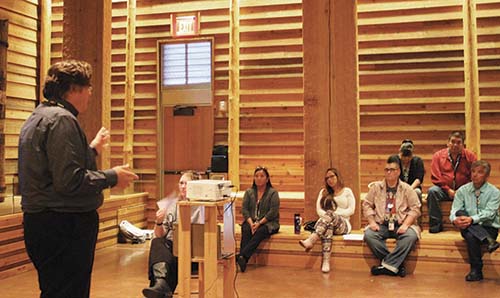
By Kalvin Valdillez, Tulalip News
On the first day of 2017, the Tulalip Tribes will begin to heal the community using a new approach to addiction and the court system, the Wellness Court. The philosophy behind the new court system is that by treating addiction as a disease and not a crime, the victim will have an opportunity to take advantages of resources such as counseling and treatment. Therefore, providing addicts the opportunity to slowly and comfortably transition from a habit-led life to a new life where they can begin take control back.
“This has been a long time coming and we’re very grateful for everyone coming together. It shows courage when you come together as a community and you want change. You want to help people instead of throwing them in jail. We know as Indian People that there’s a better way to help our people, a better way to help them find their journey,” stated Tulalip Tribes Chairman Mel Sheldon.
It has been said by numerous officials that the nation is seeing the worst drug epidemic since crack cocaine ruled the drug scene in the 1980’s. Specifically in the state of Washington, heroin and opioids are tearing families apart and are the cause of about 30% of the state’s deaths. In Native America, those numbers are a lot worse. The Tulalip Tribes alone sees 13 times more losses due to the drug epidemic.
Tulalip Board member Les Parks serves on the committee for the Wellness Court and has been very active in getting the system up and running.
He says, “The Wellness Court concept is not new to this country. It’s been around for a long time, back then it was known as drug court. But this program is a completely different animal than the drug courts of the old days. We are adopting this new philosophy of love by wrapping our arms around our people who need us.”
Les explained that the current court system is failing when it comes to helping the people from the Tulalip area who are addicts.
“The addiction in our community is rampant and [the majority] of the people that are coming through the courts are because of crimes that are related to their addiction. We’re just recycling people. You can’t just put them in jail and expect them to get better. They do their crime, go to court, then to jail. They get out and repeat their crimes and it keeps going over and over until it’s too late. What we’re doing is not working,” Les urged.
In most cases an individual can spend anywhere from two days to six months in jail. Tulalip’s Chief Judge, Ron Whitener, stated that the jail time is not a factor in the recovery process for most addicts, and holding a person who is battling addiction in jail for six months is not cost efficient. The end result for a user fresh out of jail remains the same, they will relapse and sadly, this is when many people overdose.
For this reason, the Wellness Court’s average jail time will be two days. After the individual is released, the Wellness Program is immediately put into effect. Judge Whitener explained the difference between the traditional court system and the Wellness Court.
In traditional court, the judge remains neutral and enforces jail time. At the Wellness Court, the judge is extremely interactive and rewards positive behavior and takes the time to talk to an addict who is struggling, helping them stay on their path to sobriety.
The Wellness Court is a two-year program that will assist users by providing resources and encouragement. Resources include access to counselors in behavioral health, mental health and chemical dependency, as well as overall health care. Another service Wellness Court offers is advisement for education, job placement, and housing.
Judge Whitener states the epidemic is requiring nationwide change and that the process has to adapt to the needs of today’s society. “The courts are now moving away from the old way of business. It was this idea that when people choose to commit crimes, the way you deter them from committing more crimes is by throwing them behind bars. What we are now finding is the reason they are committing crimes is because of an addiction. They’re either trying to get money to be able to pay for the drug or they’re doing something like driving a motor vehicle while impaired by the drug,” he explains.
“By breaking the cycle we can save one of our young people that’s an addict. We can’t keep sending them to jail and giving up on them. They need us. We can’t give up on them.”
– Marie Zackuse, Tulalip Tribes Board of Director
Chief Carlos Echevarria also serves on the council for the Wellness Court and has been working tirelessly to find a resolution for his people. He explained the heartbreaking reality that his team sees every day, addicted members of his community that have burned all their bridges with friends and family, now have nowhere to turn.
The Chief stated, “One of the most horrific things my officers have to deal with on a regular basis is when they come into contact with one of our members who has an outstanding warrant and is addicted. The jail refuses them because they are full. We attempt to reach out to their family members for additional resources for them and, because of strained relationships caused by the drugs, there aren’t any. We have to watch them walk out of our police department. It’s the absolute worst thing. We don’t know what’s going to happen to them as they leave our custody and head back to the streets. This program allows us to use a number of new resources to help those individuals and get them on the right path. We need to starve the addiction and through this program we can. Recovery is contagious.”
Katie Lancaster-Jones shared her experience with the Snohomish County Drug Court located in Everett. Katie became addicted at age 12. Her drug of choice was Meth. After being in and out of the court system, she realized that the system was not working for her. She desperately wanted to become clean so she attended the 21-month long drug court program and has been clean ever since.
“Drug court saved my life. It taught me structure. Now I am a Northwest Indian College Graduate. I am clean! And most importantly my two kids are happy and healthy,” expressed Katie.
During the month of October, the Tulalip Tribes is hosting a series of community meetings explaining in further detail, and answering all of your questions throughout the Tulalip Community. The remaining meetings will be held on Wednesday October 19 at the Tulalip Gym at 5:00 p.m. and on Wednesday October 26 at the Kenny Moses Building at 5:00 p.m. For additional information be sure to attend one of the upcoming community meetings.
Tulalip Board of Directors member Marie Zackuse urged her community to take action stating, “By breaking the cycle we can save one of our young people that’s an addict. We can’t keep sending them to jail and giving up on them, they need us. We can’t give up on them.”
Contact Kalvin Valdillez, kvaldillez@tulaliptribes-nsn.gov
Brandon Wovoka Bryant (1976 – 2016)
Brandon Wovoka Bryant, 40, of Tulalip, Wash., passed away October 9, 2016. He was born January 12, 1976, in Stuttgart, Germany to Wilson Bryant and Karen Sheldon. He started working as a paperboy and did Summer work at the Fish Hatchery. He also worked as a blackjack dealer and craps table boxman at the Quilceda Creek Casino where he was affectionately called “Bubbles”. He is survived by his two sons, Tycen Scott Mekail Bryant and Aiden Charles Bryant; his mother, Karen and Morris Zackuse; his father, W.H. Bryant Jr.; brother, Morgan Bryant; sisters, Julie Wilson and Emily Wilson; uncles, William Sheldon and Byron Sheldon; aunts, Marlene Beltran and Lita (Jack) Mowrer; his good friend and caretaker, Kevin Sands; and numerous cousins and other relatives. He was preceded in death by his sister, Sarah Ann Wilson; grandmother, Thelma Sheldon and Charlie “Red” Sheldon. Visitation will be held Wednesday, October 12, 2016, at 1:00 p.m. at Schaefer-Shipman with an Interfaith service to follow at 6:00 p.m. at the Tulalip Gym. Funeral service will be held Thursday at 10:00 a.m. at the Tulalip Gym with burial to follow at Mission Beach Cemetery.
Marysville School District works to ensure tribal heritage and culture is visible, shared and preserved
By Dr. Becky Berg, Marysville School District Superintendent
Recently, a conversation was overheard at the Hibulb Cultural Center. A young woman was talking about her tribal history. Her grandmother was a student during the boarding school era and the young woman said that while growing up she rarely learned about her tribal history and culture. She added that her grandmother often hid her cultural affiliation, as well as her ability to speak Lushootseed. In turn, her father never learned the language or embraced his native heritage. This was difficult for the young woman to understand, as at a young age, she chose to dedicate her career to educating herself and her community about her region’s rich cultural history, and her own tribal identity.
As a community, we are lucky to have tribal members and others who have had the strength to stand up and ensure tribal history and culture is recognized, shared and preserved. Our community, our school district, and our local leaders must also take on this charge and do what is necessary for our entire community to understand where we have been, where we are today, and where we are going.
In November of 2014, The Marysville School Board of Directors took the historic action of officially adopting the “Since Time Immemorial” (STI) Tribal Sovereignty Curriculum so that all students learn about the history, culture, government, and experiences of their Native American peers and neighbors. Partners who were instrumental in this effort included Denny Hurtado, former OSPI Office of Indian Education staff member, and State Senator John McCoy.
This curriculum was adopted in advance of Washington State Senate Bill 5433, which passed in 2015 and mandated that Washington’s Tribal history, culture and governance be taught in all Washington schools by 2016-17.
The adoption of the STI curriculum seeks to remedy a grave omission by our educational system. American history begins with the story of indigenous peoples in all parts of the land. Yet for decades our curriculum has made this rich and important heritage and culture virtually invisible. The lack of awareness of the Tribal legacy in our Marysville-Tulalip community is especially glaring given the presence of the Tulalip Tribes within our district boundaries. Teaching the STI curriculum to all students in our schools is a matter of basic justice for all, especially for those who were made to feel ashamed of their identity and culture for far too long.
The “Since Time Immemorial” provides engaging lessons. The lessons are thought provoking and are meant to help students understand multiple perspectives. During the 2015-16 school year, the curriculum was implemented in grades Kindergarten through 5, and this year it has expanded to all secondary schools district-wide.
Every day I feel deeply honored to be a member of this community and to be welcomed by tribal leaders, elders, parents and students. And every day, the Marysville School District will work to ensure our community’s tribal heritage and culture is visible, shared and preserved.
To learn more about the Since Time Immemorial curriculum, please visit www.indian-ed.org.


